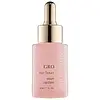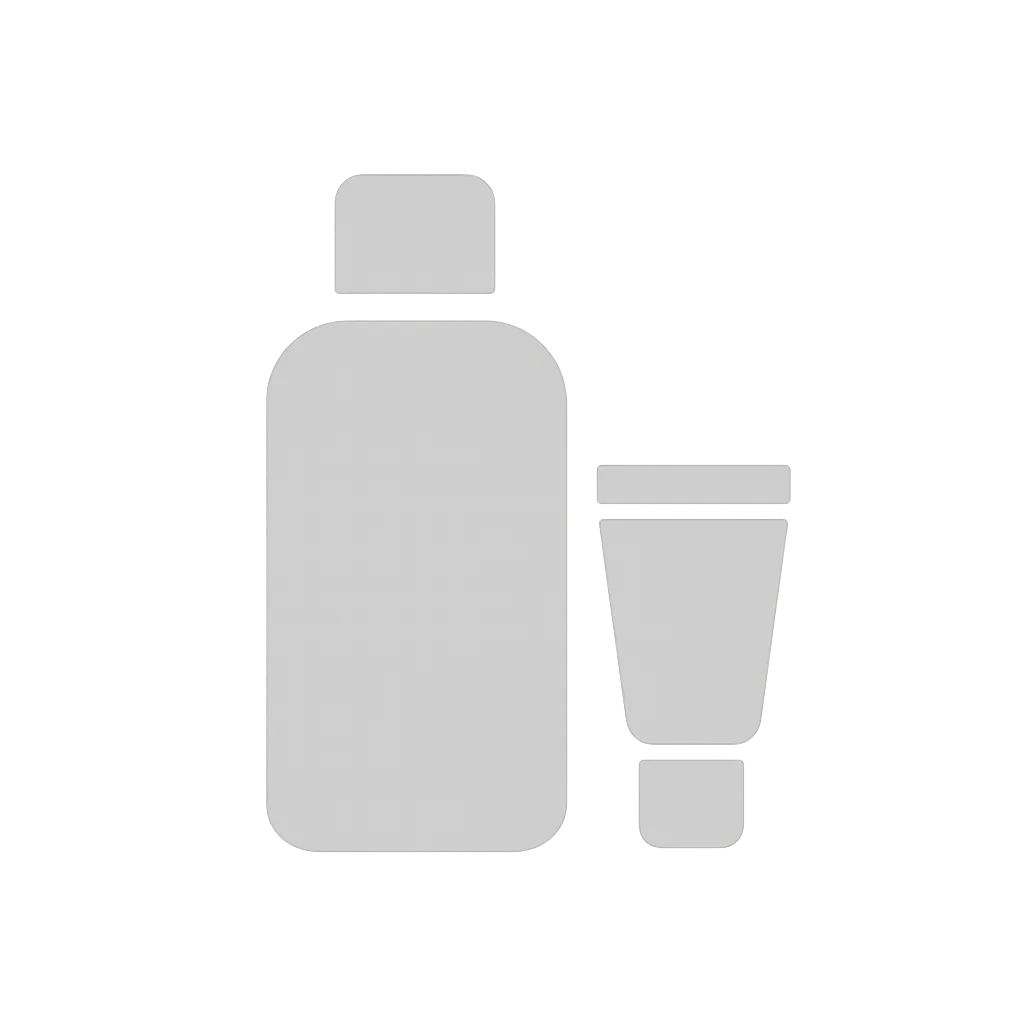What's inside
What's inside
 Key Ingredients
Key Ingredients

 Benefits
Benefits

 Concerns
Concerns

 Ingredients Side-by-side
Ingredients Side-by-side

Water
Skin ConditioningButylene Glycol
HumectantGlycerin
HumectantAlcohol Denat.
AntimicrobialPolyglyceryl-10 Laurate
Skin ConditioningCaffeine
Skin ConditioningCurcuma Longa Callus Conditioned Media
Skin ConditioningCitrus Bergamia Peel Oil Expressed
PerfumingSodium Phytate
Pentylene Glycol
Skin ConditioningLimonene
PerfumingCitric Acid
BufferingSodium Benzoate
MaskingPotassium Sorbate
PreservativeLactic Acid
BufferingTrifolium Pratense/Vigna Radiata) Sprout Extract
AntioxidantLinalool
PerfumingSodium Hydroxide
BufferingBiotin
AntiseborrhoeicAlcohol
AntimicrobialPhytic Acid
Linalyl Acetate
MaskingPinene
MaskingNicotiana Benthamiana Octapeptide-30 Sh-Oligopeptide-2
Skin ConditioningNicotiana Benthamiana Hexapeptide-40 Sh-Polypeptide-9
Nicotiana Benthamiana Hexapeptide-40 Sh-Polypeptide-86
Water, Butylene Glycol, Glycerin, Alcohol Denat., Polyglyceryl-10 Laurate, Caffeine, Curcuma Longa Callus Conditioned Media, Citrus Bergamia Peel Oil Expressed, Sodium Phytate, Pentylene Glycol, Limonene, Citric Acid, Sodium Benzoate, Potassium Sorbate, Lactic Acid, Trifolium Pratense/Vigna Radiata) Sprout Extract, Linalool, Sodium Hydroxide, Biotin, Alcohol, Phytic Acid, Linalyl Acetate, Pinene, Nicotiana Benthamiana Octapeptide-30 Sh-Oligopeptide-2, Nicotiana Benthamiana Hexapeptide-40 Sh-Polypeptide-9, Nicotiana Benthamiana Hexapeptide-40 Sh-Polypeptide-86
Water
Skin ConditioningGlycerin
HumectantPolysorbate 20
EmulsifyingGlycyrrhiza Glabra Root Extract
BleachingSaccharomyces Ferment Lysate Filtrate
Skin ConditioningGlycine
BufferingPisum Sativum Extract
Skin ConditioningPullulan
Zinc Sulfate
AntimicrobialQuercus Robur Bark Extract
AstringentLarix Europaea Wood Extract
HumectantZinc Gluconate
Skin ConditioningAcetyl Tyrosine
Skin ConditioningAmaranthus Caudatus Seed Extract
Skin ConditioningUrtica Dioica Leaf Extract
Skin ConditioningHydrolyzed Yeast Protein
Skin ConditioningCamellia Sinensis Leaf Extract
AntimicrobialVitis Vinifera Seed Extract
AntimicrobialZinc Chloride
AntimicrobialHydroxyethylcellulose
Emulsion StabilisingLysolecithin
EmulsifyingXanthan Gum
EmulsifyingSclerotium Gum
Emulsion StabilisingParfum
MaskingSodium Hydroxide
BufferingPentylene Glycol
Skin ConditioningHydroxyacetophenone
AntioxidantLimonene
PerfumingLinalool
PerfumingWater, Glycerin, Polysorbate 20, Glycyrrhiza Glabra Root Extract, Saccharomyces Ferment Lysate Filtrate, Glycine, Pisum Sativum Extract, Pullulan, Zinc Sulfate, Quercus Robur Bark Extract, Larix Europaea Wood Extract, Zinc Gluconate, Acetyl Tyrosine, Amaranthus Caudatus Seed Extract, Urtica Dioica Leaf Extract, Hydrolyzed Yeast Protein, Camellia Sinensis Leaf Extract, Vitis Vinifera Seed Extract, Zinc Chloride, Hydroxyethylcellulose, Lysolecithin, Xanthan Gum, Sclerotium Gum, Parfum, Sodium Hydroxide, Pentylene Glycol, Hydroxyacetophenone, Limonene, Linalool
Ingredients Explained
These ingredients are found in both products.
Ingredients higher up in an ingredient list are typically present in a larger amount.
Glycerin is already naturally found in your skin. It helps moisturize and protect your skin.
A study from 2016 found glycerin to be more effective as a humectant than AHAs and hyaluronic acid.
As a humectant, it helps the skin stay hydrated by pulling moisture to your skin. The low molecular weight of glycerin allows it to pull moisture into the deeper layers of your skin.
Hydrated skin improves your skin barrier; Your skin barrier helps protect against irritants and bacteria.
Glycerin has also been found to have antimicrobial and antiviral properties. Due to these properties, glycerin is often used in wound and burn treatments.
In cosmetics, glycerin is usually derived from plants such as soybean or palm. However, it can also be sourced from animals, such as tallow or animal fat.
This ingredient is organic, colorless, odorless, and non-toxic.
Glycerin is the name for this ingredient in American English. British English uses Glycerol/Glycerine.
Learn more about GlycerinLimonene is a fragrance that adds scent and taste to a formulation.
It's found in the peel oil of citrus fruits and other plants such as lavender and eucalyptus. The scent of limonene is generally described as "sweet citrus".
Limonene acts as an antioxidant, meaning it helps neutralize free radicals.
When exposed to air, oxidized limonene may sensitize the skin. Because of this, limonene is often avoided by people with sensitive skin.
The term 'fragrance' is not regulated in many countries. In many cases, it is up to the brand to define this term. For instance, many brands choose to label themselves as "fragrance-free" because they are not using synthetic fragrances. However, their products may still contain ingredients such as essential oils that are considered a fragrance.
Learn more about LimoneneLinalool is a fragrance and helps add scent to products. It's derived from common plants such as cinnamon, mint, citrus, and lavender.
Like Limonene, this ingredient oxidizes when exposed to air. Oxidized linalool can cause allergies and skin sensitivity.
This ingredient has a scent that is floral, spicy tropical, and citrus-like.
Learn more about LinaloolPentylene glycol is typically used within a product to thicken it. It also adds a smooth, soft, and moisturizing feel to the product. It is naturally found in plants such as sugar beets.
The hydrophilic trait of Pentylene Glycol makes it a humectant. As a humectant, Pentylene Glycol helps draw moisture from the air to your skin. This can help keep your skin hydrated.
This property also makes Pentylene Glycol a great texture enhancer. It can also help thicken or stabilize a product.
Pentylene Glycol also acts as a mild preservative and helps to keep a product microbe-free.
Some people may experience mild eye and skin irritation from Pentylene Glycol. We always recommend speaking with a professional about using this ingredient in your routine.
Pentylene Glycol has a low molecular weight and is part of the 1,2-glycol family.
Learn more about Pentylene GlycolSodium Hydroxide is also known as lye or caustic soda. It is used to adjust the pH of products; many ingredients require a specific pH to be effective.
In small amounts, sodium hydroxide is considered safe to use. However, large amounts may cause chemical burns due to its high alkaline.
Your skin has a natural pH and acid mantle. This acid mantle helps prevent harmful bacteria from breaking through. The acid mantle also helps keep your skin hydrated.
"Alkaline" refers to a high pH level. A low pH level would be considered acidic.
Learn more about Sodium HydroxideWater. It's the most common cosmetic ingredient of all. You'll usually see it at the top of ingredient lists, meaning that it makes up the largest part of the product.
So why is it so popular? Water most often acts as a solvent - this means that it helps dissolve other ingredients into the formulation.
You'll also recognize water as that liquid we all need to stay alive. If you see this, drink a glass of water. Stay hydrated!
Learn more about Water